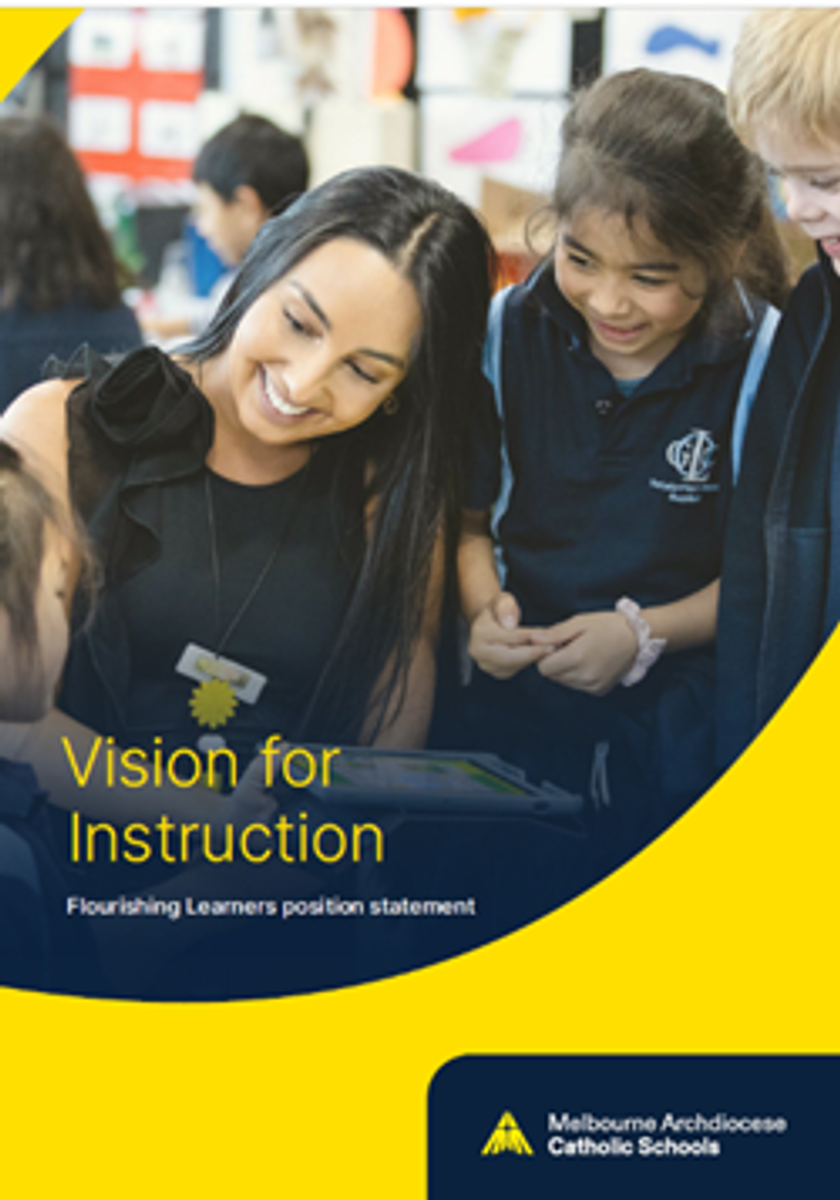MACS Flourishing Learners - Vision for Instruction

In the last Newsletter we looked at MACS’ (Melbourne Archdiocesan Catholic Schools) Vision for Instruction; as the preferred system-wide approach to achieving teaching and learning excellence. This extract from MACS plans goes further.
The MACS 2030: Forming Lives to Enrich the World (MACS 2030) strategic plan calls all MACS schools to come together in common purpose and vision to make the most of what a Catholic education has to offer, so we can have the greatest and most distinctive impact in our classrooms, staffrooms and school communities.
We will provide an outstanding education, focused on formation of the whole person, that has the intellectual, practical and moral excellence of learners at its heart. We will aim to deliver the best educational outcome for every student.
To achieve this, we are committed to evidence-based instruction and the active promotion of equity and excellence. As part of the Flourishing Learners strategic theme, we aim to deliver the best educational outcome for every student across the breadth of the Victorian curriculum.
THE WHAT: This week we bring you three of the seven ‘How students Learn’ statements and their implications for teaching and learning instruction.
How students learn | Implications for instruction |
Most students need formal teaching to learn biologically secondary knowledge. While many students learn biologically primary knowledge without any formal teaching (e.g. learning to listen and speak), biologically secondary knowledge (e.g. reading, writing, mathematics) requires instruction, and must be taught (Castles, Rastle & Nation 2018).
| Teach what students won’t learn on their own. Biologically secondary knowledge is the core of what MACS schools teach and much of the curriculum requires formal teaching. |
Thinking occurs when we combine information from our environment and from our long-term memory in new ways (Willingham 2009b). Working memory is the space where we think (Clark, Kirschner & Sweller 2012). Long-term memory stores information organised in ‘schemas’.
| Consider student prior knowledge when planning a lesson to ensure students have the necessary background knowledge to access new material and connect it to what they already know. |
| Working memory has limits (Sweller 2011). Students can only keep so much new information in their minds at once. Cognitive overload can occur when students try to process multiple pieces of new information or try to complete new tasks without prior instruction or scaffolding. | Respect students’ cognitive load by providing new information in manageable parts or steps. Space out sequencing logically using guidance and scaffolds (Chen et al. 2018). Teach new content explicitly, using modelling and worked examples (Barbieri et al. 2023) to reduce cognitive load (Deans for Impact 2015 |
The evidence from cognitive science research offers important information on how this learning happens with practical implications for teaching. At St. Mark's, we are dedicated to continually improving our teaching practices to better support student learning. Teachers identify the specific support they need to strengthen their instructional skills. This ongoing focus on professional growth ensures our teachers are equipped with the best strategies to help every student succeed. One key principle is understanding that working memory is limited and research highlights how information is often lost over time without review. To address this, our teachers are working to ensure regular review of key concepts. This approach helps students retrieve and retain what they have learned.

